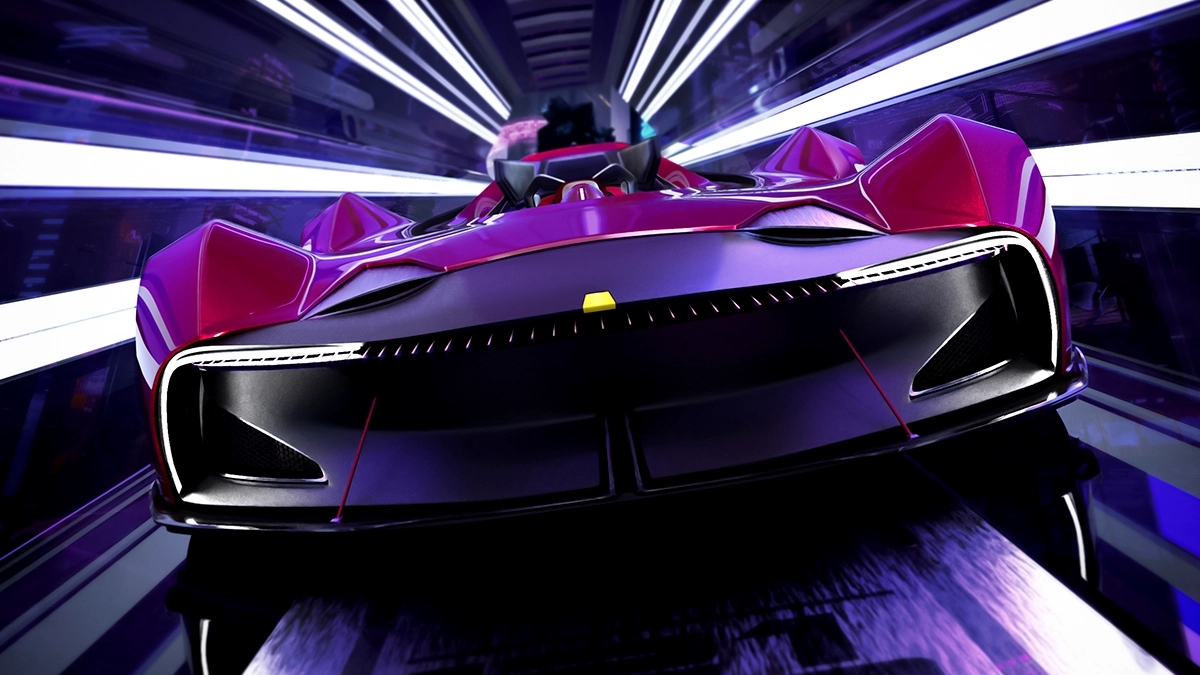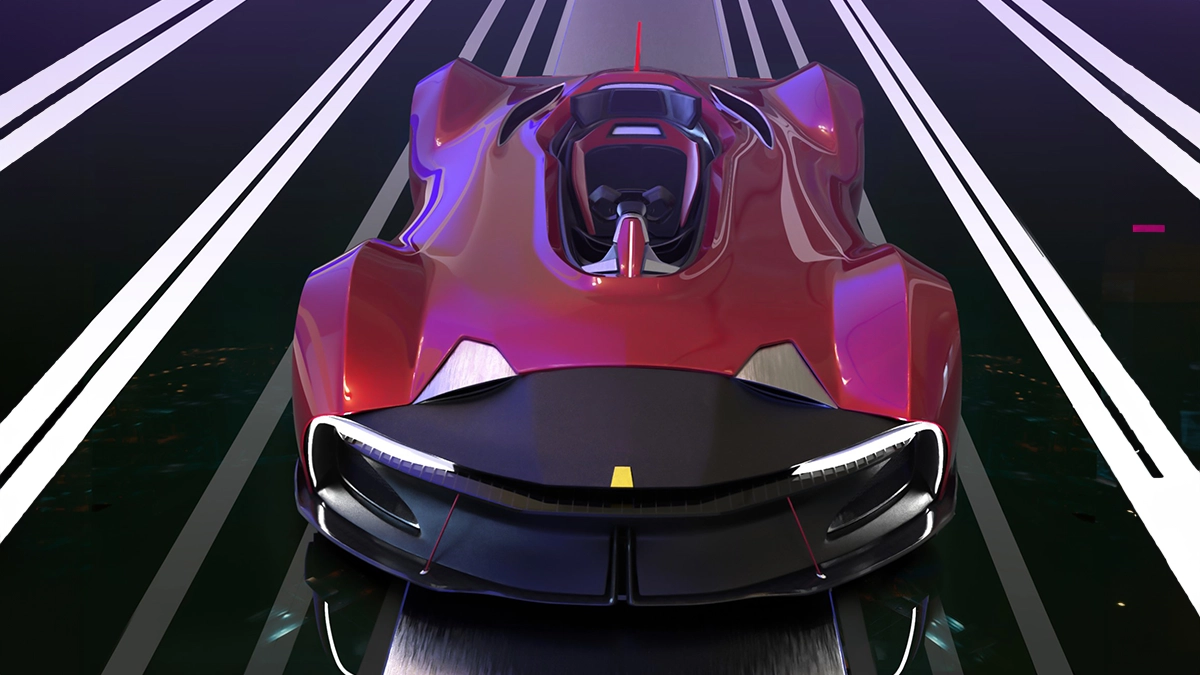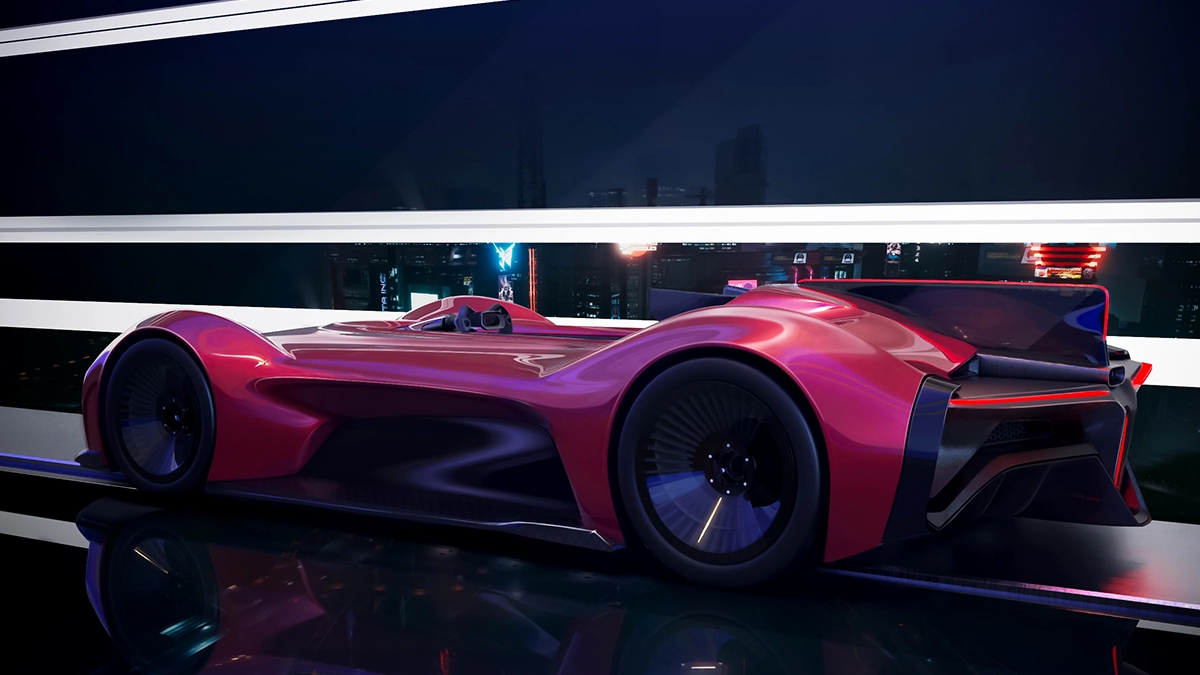Imagine experiencing the thrill of Formula 1 in an everyday car. Amin Qashqavi takes on this challenge with the Ferrari HJR project, which aims to design a speedster that truly captures the dynamic essence of Formula 1 and improves aerodynamic performance. The resulting design is sleek, stylish, elegant, and dynamic. It incorporates smooth curves on all surfaces, creating the illusion of speed even when the car is stationary. The aerodynamic design is evident throughout, from the low-slung body to the rear wing.

To achieve its performance goals, the Ferrari speedster's design is divided into two parts—upper and under—created to optimize aerodynamics. The under part is made to cut sharply through the air, reducing resistance, while the upper part moves smoothly. This design guarantees peak efficiency, speed, and a stylish appearance. Essentially, these two elements work together to enhance both the speedster's performance and its visual appeal. In the design process, clean and smooth language dominates, shaping volumes through intersecting surfaces to create sculptural and organic forms. The ultimate goal is to establish a unified, flowing aesthetic that captures both speed and grace.
The Ferrari HJR concept is unleashing a powerful electric character in the exterior
Even though it's an electric vehicle without a traditional grill, the speedster impressively incorporates multiple air intakes and vents, along with its striking two-part body, conveying its solid performance capabilities. This blend of sporty elements with elegance and simplicity reflects a powerful and precise essence. Additionally, the design exudes an elegant and pure feel, favouring a streamlined, purposeful aesthetic over unnecessary embellishments. Every line and surface serves a specific function, emphasizing the vehicle's commitment to purity, dynamism, and strength.

While the lower part adds a hint of dynamism, the overall side profile intentionally stays neutral to strengthen the vehicle's stance. Serving as a canvas, it boosts the impact of the design and allows the front and rear views to express reliability and determination, enhancing its dynamic allure. And if you see the rear section of the car, the Ferrari speedster draws inspiration from a target symbol, featuring narrow quad-long linear lights on a distinct section with a contrasting colour from the main body. These lights make a bold statement, accentuating the vehicle's purposeful character and determined nature.


The innovation in the interior seamlessly extends the theme of the exterior
In maintaining a seamless blend of form and function, the interior design of the speedster seamlessly extends the theme from its exterior. Instead of a traditional physical cluster, a holographic display takes center stage, offering a glimpse into the technological marvel at the heart of the speedster. The steering wheel is equipped with a separate touch display and two main buttons, seamlessly integrated with the vehicle's advanced camera system, providing real-time data and control at the driver's fingertips.
The interior of the Ferrari HJR features sleek sculptural surfaces and minimalist detailing, creating a modern and simple aesthetic. Premium materials like carbon fibre, brushed aluminium, and high-quality leather, along with supportive seats for the driver during high-performance actions, contribute to a sporty ambience. In summary, the interior design achieves a perfect balance between minimalism and excitement.

Conclusion
The creation of this single-seater speedster Ferrari was an exciting challenge that required careful attention to every detail. From the two-part body to the interior components, each element played a crucial role in shaping a blend of functionality, excitement, and purity. This speedster is a marvel of automotive innovation and serves as a testament to the relentless pursuit of perfection, pushing and redefining boundaries. Welcome to an era where speed reigns supreme, and the road ahead echoes with the marvels of aerodynamics.
About Designer
Amin Qashqavi is a junior car designer with a diverse background in various design disciplines, including concept design, product design, and jewellery design. Despite exploring different areas, his true passion lies in car and transportation design. He brings a range of skills to the table, including creative problem-solving, proficiency in 3D modelling utilizing subdivision and NURBS techniques, adeptness in digital rendering, and a keen eye for sketching. You can follow him on Instagram and Linkedin






